On May 18th we greeted about a dozen visitors to the Gower Regeneration solar farm site for a study tour organised by Community Energy Wales. All were eager to learn more about the history of the scheme and the wider topic of local/shared renewable energy.
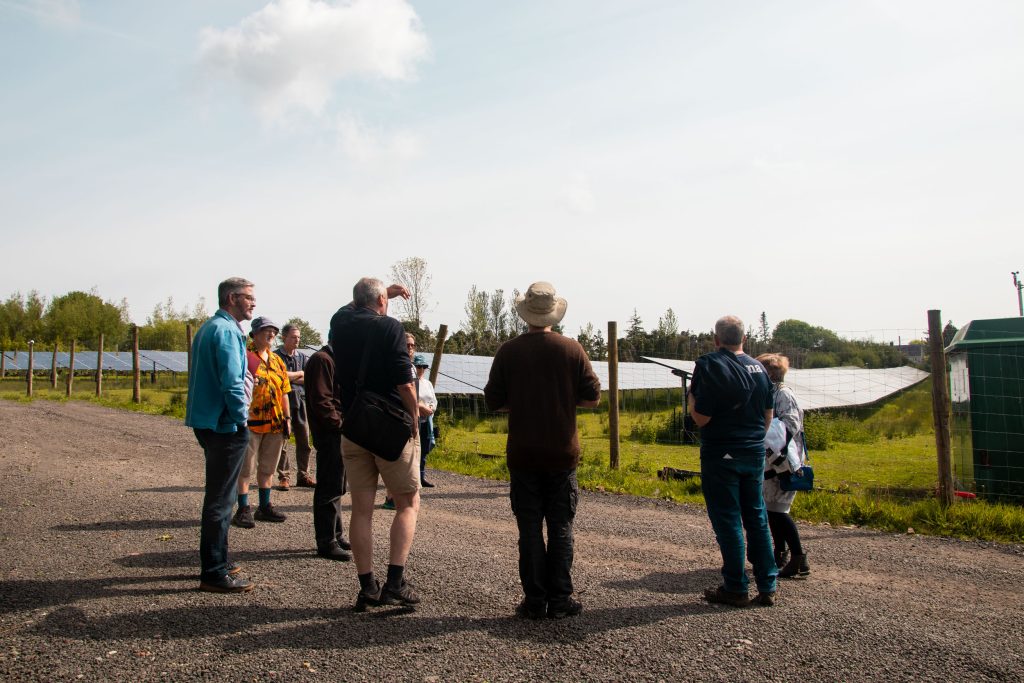
First, Ant told the nail-biting story of the build. After getting planning permission, which was mercifully straightforward, the next mission was to secure a connection to the national grid. Many community energy projects struggle with this, either due to grid capacity or costly infrastructure. Already having the Western Power low voltage network nearby to connect to, our grid connection cost under £30,000. A site nearby which Gower Power had looked at developing in the past would have needed over £200k for a grid connection, with similar size projects afoot elsewhere in Wales being quoted £2.5m.
The project’s business model was based around the ROC a government subsidy available until 31st March 2017, so the site needed to be energised and operational by then. With such an important deadline, the decision was made to go with a very large, very experienced developer, who promised to complete the job fast. They did not start work on time – and the problems didn’t end there. At times, the very wet ground saw heavy machines sinking into the trenches they had dug, and the site looked like a desolate wasteland as frustrating delays continued to arise. The site was energised without a minute to spare at 4.30pm on March 31st, assuring the all-important subsidy… It could then be moved into community ownership, via a share offer through which investors became members of Gower Regeneration, a Community Benefit Society set up to run the facility and distribute community benefit funds.
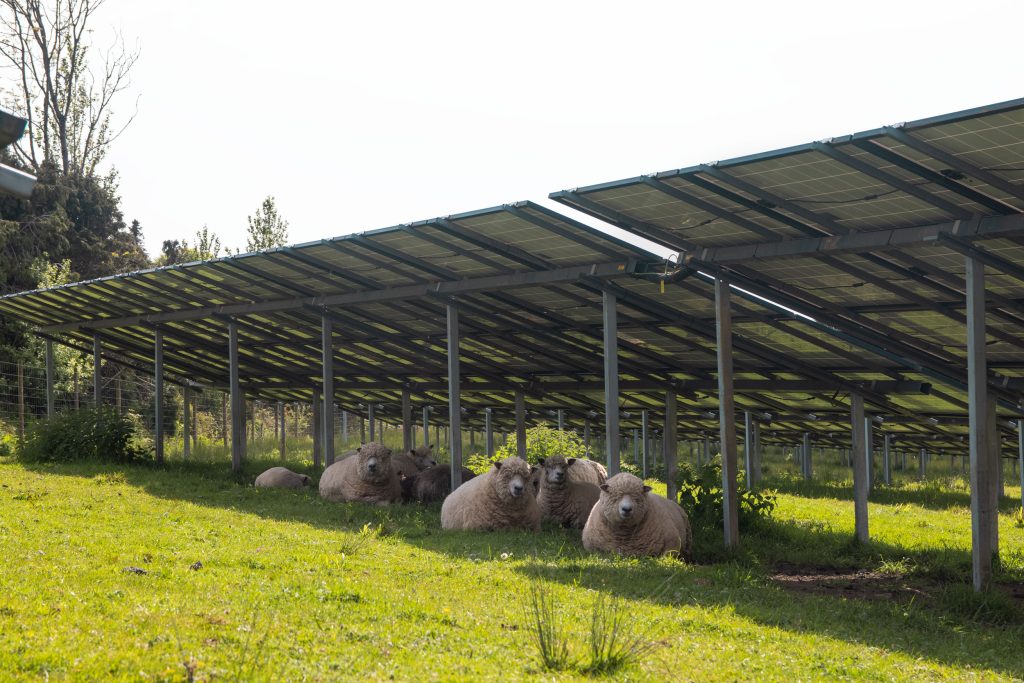
Wales’s first community-owned solar farm has gone on to outperform similar sites due to the amount of Gower sunshine, the efficiency within the system and the lack of downtime which other sites have suffered.
A vital element in the project’s success was the faith and flexibility of community investors. A total of some £950k, which they had paid via the ethical investment platform Ethex, was held in escrow until the build was complete and could be declared a viable investment. Investors were kept informed of delays and offered refunds, but everyone was keen to see the project go ahead and to keep their investment in place until the end of the process, when funds could be drawn down to start repaying the circa £1m loan from the Development Bank of Wales. Investors have been rewarded with a good return every year (the lowest being 4%), about 10% of the capital has been repaid, and a surplus has now started collecting that goes into a community benefit fund.
Moving around the site, Roy explained the history of the farm and the use of the various buildings by fledgling businesses, most having a focus on sustainability. The opportunity for entrepreneurs to test a concept is so valuable, and the Gower Heritage Centre has been a “nursery” for many businesses that have moved on to grander premises. Supporting this economic development activity is a key aim of Gower Regeneration.
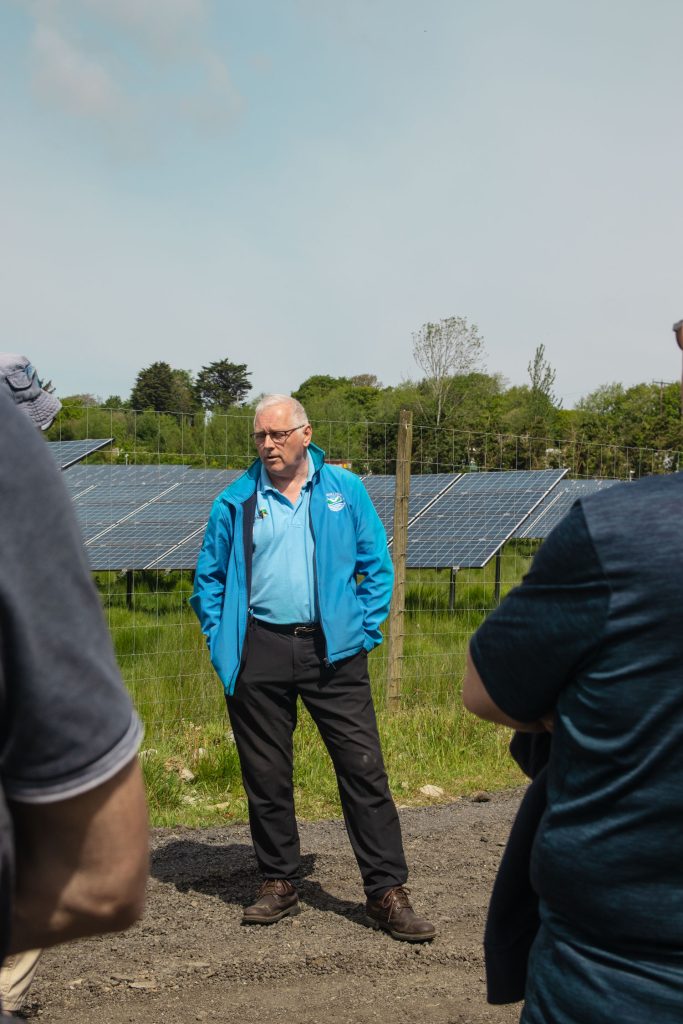
On the eastern side of the site, visitors saw the opening of a mine shaft connecting to one of four coal seams running beneath the land. The need for a site survey to ensure safety around the former mine workings (which had employed some 400 people when in use) was another pre-build threat to the project: not many funders will pay for a survey that might declare a project unviable! The Energy Saving Trust stepped in with a very welcome grant, and fortunately the only mitigation required was some fencing and a clear space, and only removing about 60 panels from the original design.
Gower Regeneration not only sells green electricity to the grid but also stores it so it can be sold on to local customers, via a separate company, Gower Power Solar Storage (GPSS). The quota of electricity being produced is accurately measured and an equivalent amount of green energy is supplied to customers. If you live in the Swansea area you can get a non-obligation quote for electricity from the solar farm and topped up by 100% of other renewables here.
Direct supply to customers onsite and immediately nearby is the longer term ambition, and community energy groups are lobbying to be allowed to do this: see info below on the Local Electricity Bill.
To sell our green energy to customers, GPSS had to partner with a retailer who would purchase the power and supply it to customers on the Gower Power tariff. With the volatility in the energy market place our first retail partner along with most the other small energy suppliers, Bristol Energy, went into decline, and so Bristol had to pul out of the partnership. The energy supply offer was later re-launched in partnership with Ecotricity. Nevertheless, in the two years since Gower Power Solar Storage was launched, about 150 customers have signed up.
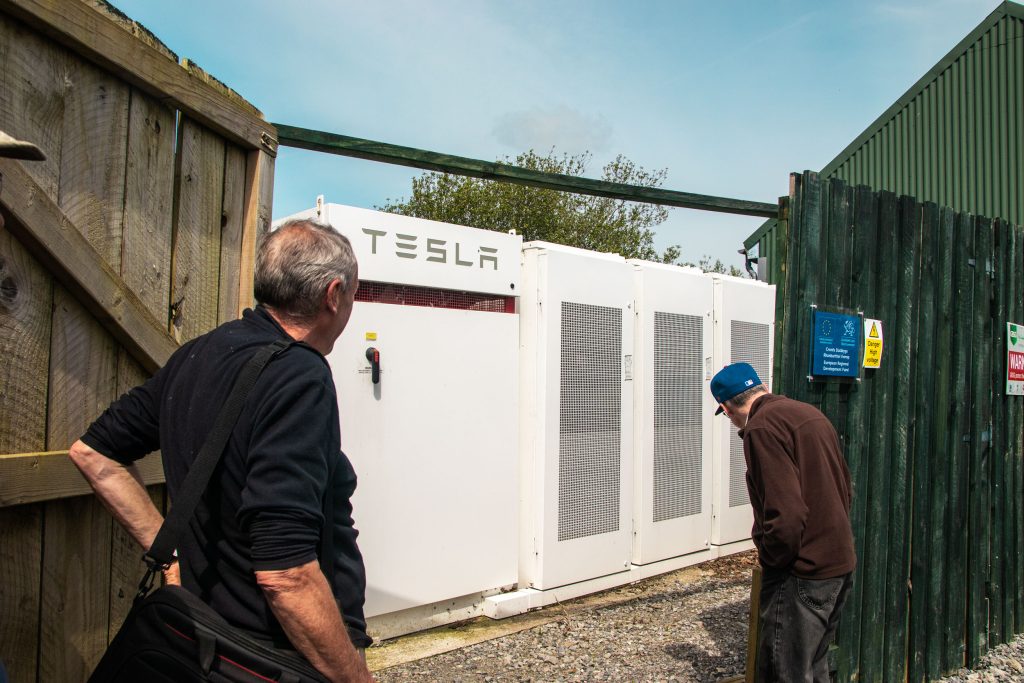
After admiring the battery it was time for a tea-and-cake stop, while hearing from Josh about how Summit Good are using the upper part of the Killan Farm site.
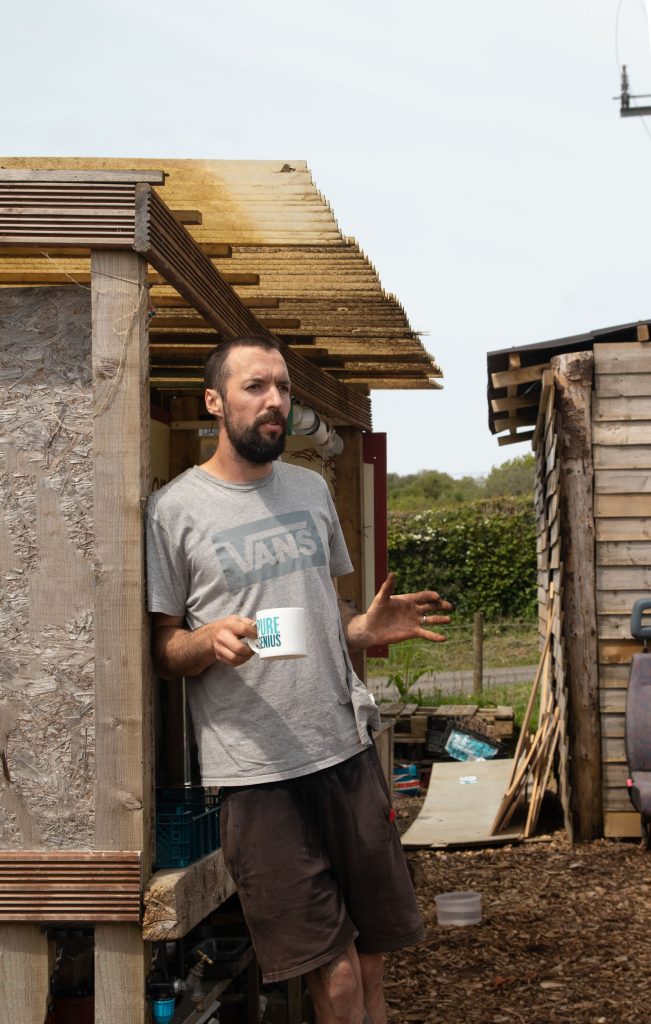
Visitors were impressed by the range of projects, small businesses and community-led ventures into sustainability based at Summit Good, probably best summed up by an event they are all involved in planning: food will be provided by those producing veg, eggs, sauerkraut, real ale, and other delicious things; decorations will be created by Petallica flower farm and menus will be printed on Wild Plant paper. For more information about all these small businesses, please hop over to the Summit Good website.
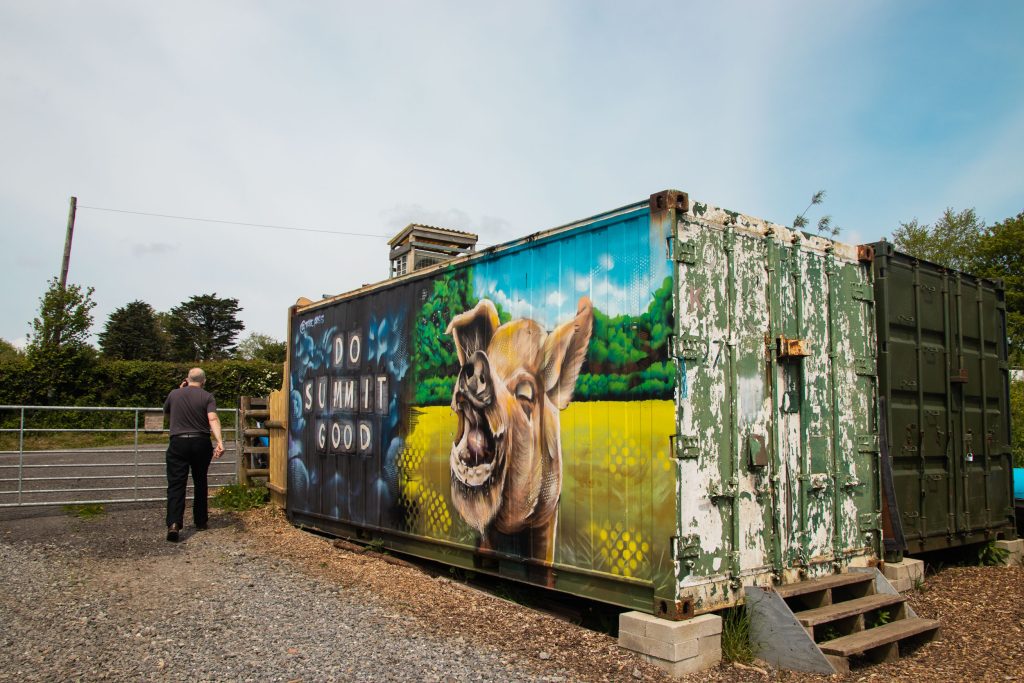
After a delicious lunch supplied by Motley Pies, Gowerton, we heard about some important issues that those with an interest in local community energy will want to be aware of.
In 2017, Welsh Government set a target: by 2030, 1 GW of renewable energy generation capacity in Wales should be in community ownership. Also, since 2020 there has been an expectation for all new energy projects to have at least an element of local ownership. (See Welsh Government’s guidance for communities, developers and decision-makers.) Community Energy Wales and Low Carbon Alliance are engaged in work to negotiate shared ownership for a very large proposed solar development in the Gorseinon area, the Parc Solar Caenewydd Project. Please check that out and register for events to get further information.
The Local Electricity Bill has been drafted by “Power For People”, who describe it as:
A Bill to require the Secretary of State to make regulations to establish a framework to support the growth of community energy schemes; to guarantee small energy generators a stable tariff for selling their energy based on current market rates; to establish a local energy supply mechanism to enable community renewable generation schemes to sell directly to local people; to give specified duties to the Gas and Electricity Markets Authority; to require annual reporting; and for connected purposes.
Please check it out and consider supporting the campaign.
Overall, the study tour was a great celebration of how far this wonderful project has come, and all the great things that have been started by willing people with good ideas. If you’d like to contribute to future projects like this, please consider joining the Gower Power board! And if you aren’t already signed up to get your power from Gower, you can do that here.
















